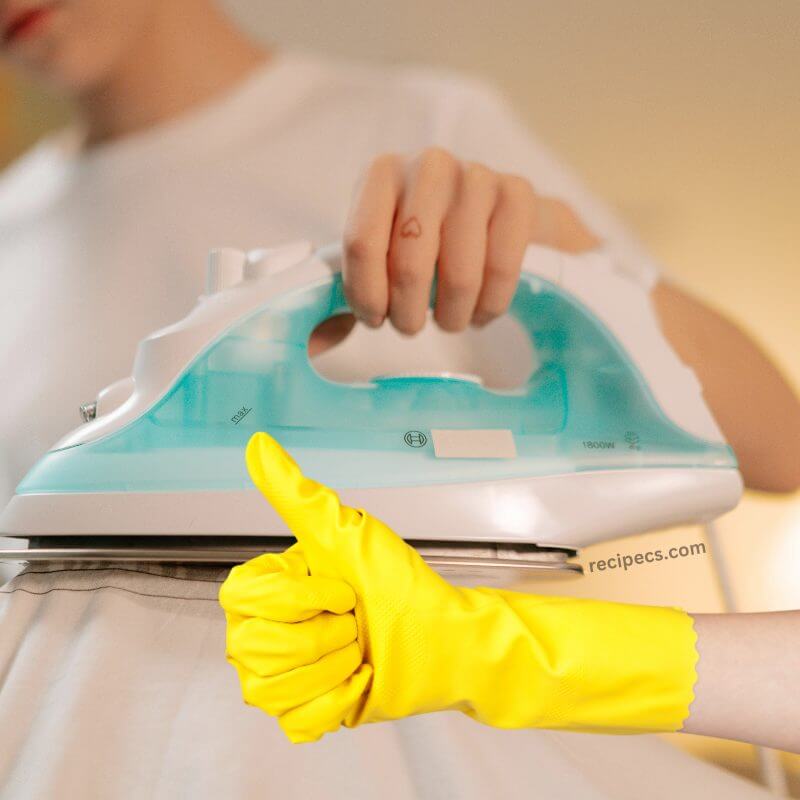Would you like to save this?
The iron is an essential appliance in every household, indispensable for keeping our clothes neat and presentable. No matter how hot it gets, most people can’t resist using it to press their garments before heading out. Over time, however, your iron can become dirty and less effective. Therefore, regular cleaning and maintenance are crucial to prolong its lifespan and ensure optimal performance.
Understanding the Importance of Iron Maintenance
The iron, like any other household appliance, needs routine maintenance to function properly and prevent staining freshly laundered clothes. Without regular care, irons can accumulate dirt and grime on their soleplates, as well as limescale within their steam vents. This buildup can lead to issues such as uneven heating, fabric damage, and an unsightly appearance.
Why Cleaning Your Iron Should Be a Priority:
- Prevent Staining: Dirty soleplates can leave marks on clothes, ruining their appearance.
- Ensure Proper Steam Release: Limescale buildup can block steam vents, reducing efficiency.
- Prolong Iron Lifespan: Regular cleaning helps maintain the iron’s condition and prolongs its usability.
- Enhance Ironing Performance: A clean iron works more smoothly, allowing for easier and more effective ironing.
With regular care and cleaning, you can ensure that your iron continues to perform effectively, leaving your clothes looking fresh and wrinkle-free.
Practical Methods for Cleaning Your Iron
Thankfully, cleaning your iron doesn’t require a lot of time or expensive products. With a few simple household items and some patience, you can keep your iron in top condition. Here are some practical methods to restore your iron to its original state:
Method 1: Cleaning with Coarse Salt and Baking Paper
A popular method among homemakers involves using coarse salt and baking paper. Although it might seem unusual, this combination works wonders for cleaning your iron.
Steps:
- Prepare the Surface: Lay a sheet of baking paper on a flat surface and evenly sprinkle a generous amount of coarse salt over it.
- Heat the Iron: Turn on the iron and set it to a high temperature, ensuring it is hot enough to effectively clean the soleplate.
- Iron the Salt: Once the iron is heated, carefully glide it over the salt-covered baking paper as if you are ironing a piece of clothing. Apply firm pressure to dislodge any dirt or limescale.
- Wipe Clean: Afterward, wipe the soleplate with a clean cloth to remove any remaining salt and debris.
This method quickly and easily removes dirt and limescale, making your iron look and perform like new without the risk of damaging fabrics.
Method 2: Cleaning with Vinegar
Vinegar is a versatile and natural cleaning agent widely used for various household tasks, including cleaning irons. It can effectively remove embedded grime and restore the luster of steel surfaces.
Cleaning the Soleplate:
- Prepare a Cleaning Solution: Mix equal parts of water and vinegar to create a cleaning solution.
- Apply the Solution: Dampen a cloth with the solution and gently wipe the soleplate and exterior surfaces of the iron. Make sure to clean all areas thoroughly.
- Rinse and Dry: Use a clean cloth to wipe away the vinegar solution, ensuring no residue is left behind before storing or using the iron.
Cleaning the Steam Vents:
- Mix Vinegar and Water: Combine half vinegar and half water and pour the mixture into the iron’s water reservoir.
- Activate the Steam Function: Turn on the iron and allow it to steam for a few minutes to loosen and expel any limescale deposits.
- Flush the Reservoir: After steaming, empty the reservoir and rinse it with clean water to remove any vinegar traces.
Vinegar’s natural acidity helps dissolve limescale buildup, ensuring your iron functions efficiently and continues to produce consistent steam.
Tips for Proper Ironing and Maintenance
While cleaning your iron is essential, following proper ironing techniques and maintenance practices can further enhance its performance and lifespan. Here are some helpful tips:
Use the Right Settings: Always adjust the iron’s temperature settings according to the fabric you are ironing. Using too high a temperature on delicate fabrics can cause damage.
Avoid Ironing Over Zippers and Buttons: Direct contact with metal components can scratch and damage the soleplate. Use a cloth to protect the soleplate and the fabric.
Empty the Water Tank: After each use, empty the water reservoir to prevent limescale buildup and extend the iron’s lifespan.
Use Distilled Water: To minimize mineral deposits, use distilled water instead of tap water in the iron’s reservoir.
Store Properly: Store the iron in an upright position to prevent damage to the soleplate and avoid tangling the cord.
When to Replace Your Iron
While regular cleaning and maintenance can extend the life of your iron, there comes a time when replacement is necessary. If your iron is several years old and frequently malfunctions, it may be time to invest in a new one. Today, both traditional and modern irons are available, some even featuring vertical steam functions for quick touch-ups without the ironing board.
For individuals who iron occasionally, a standard iron suffices. However, families with extensive laundry needs might benefit from a professional-grade iron with a built-in boiler for more efficient performance.
Conclusion
Keeping your iron clean and well-maintained is essential for ensuring its optimal performance and prolonging its lifespan. By following simple cleaning techniques using household items like coarse salt, baking paper, and vinegar, you can restore your iron to its original condition. Additionally, practicing proper ironing techniques and regular maintenance can further enhance your iron’s efficiency. When your iron is well-maintained, it keeps your clothes looking crisp and fresh, making you feel confident and well-dressed.







